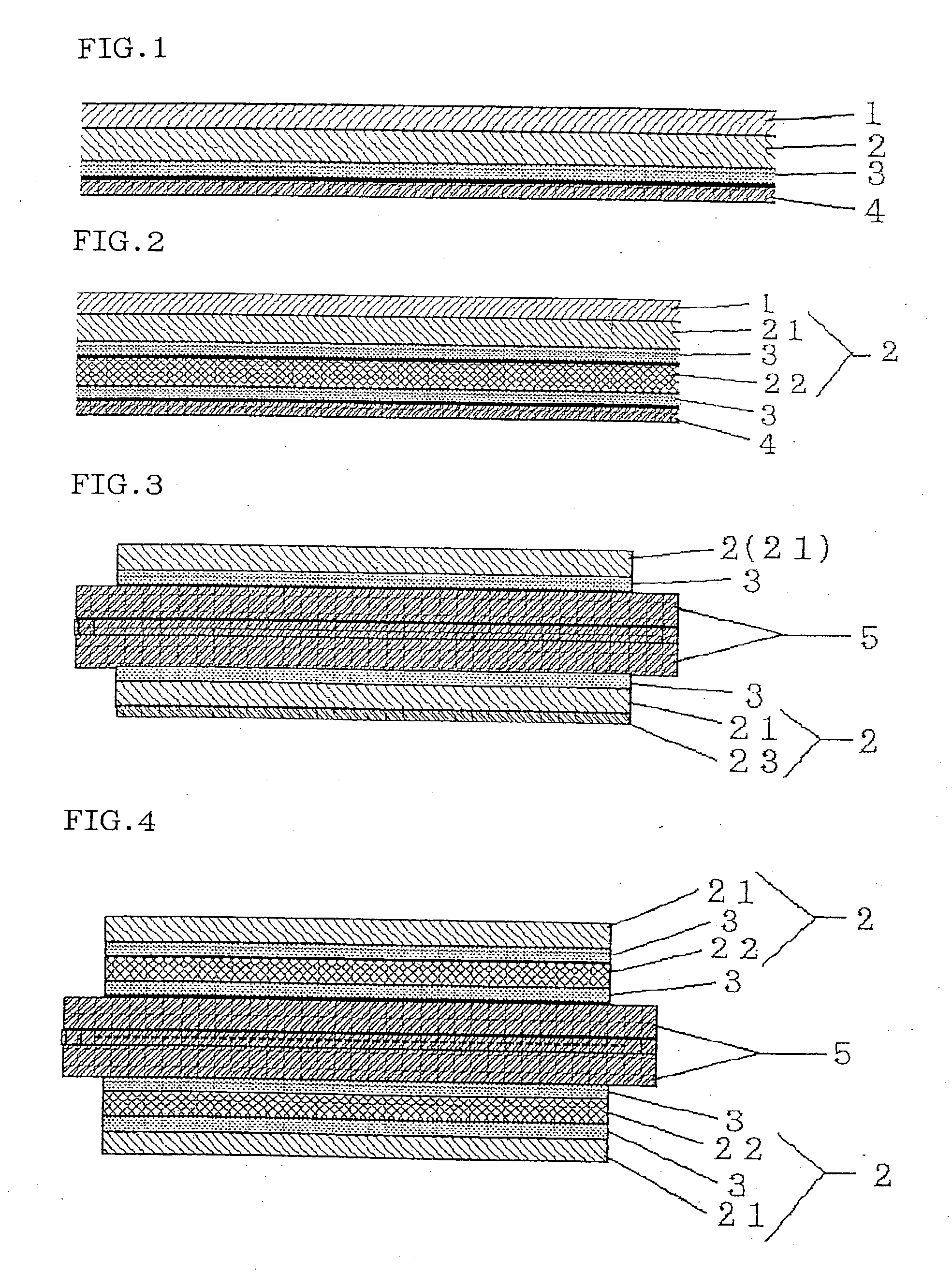Pressure sensitive adhesive optical film and image viewing display
a technology of pressure sensitive adhesives and optical films, applied in film/foil adhesives, instruments, polarising elements, etc., can solve the problems of deterioration in reworkability, increased costs of liquid crystal cells, and increased demands for reworkability (1) of optical films enabling reproduction of expensive liquid crystal cells
- Summary
- Abstract
- Description
- Claims
- Application Information
AI Technical Summary
Benefits of technology
Problems solved by technology
Method used
Image
Examples
example 1
[0117] (Preparation of an Acrylic Based Pressure Sensitive Adhesive)
[0118] Butyl acrylate 95 parts, acrylic acid 5 parts, and 2,2'-azobisisobutyronitrile 0.2 part were added with ethyl acetate 150 parts into a reaction vessel having a condenser tube, a nitrogen inlet tube, a thermometer, and an agitating device, reaction was performed under nitrogen gas current at 60.degree. C. for 4 hours, and subsequently at 80.degree. C. for 2 hours, and reaction was completed. Then, ethyl acetate 83 parts was added to a resulting reaction liquid to obtain an acrylic based polymer solution of 30% by weight of solid content concentration. Trimethylol propane tolylene diisocyanate 4 parts to solid content 100 parts was blended to thus obtained polymer solution, and an acrylic based pressure sensitive adhesive was obtained.
[0119] (Production of a Pressure Sensitive Adhesive Optical Film)
[0120] Next, the above-mentioned acrylic based pressure sensitive adhesive was applied onto a separator comprising...
example 2
[0125] Except for having used an aqueous solution of polyethylene imine ("Epomine SP-200" manufactured by NIPPON SHOKUBAI Co., Ltd.) 0.02% by weight instead of an aqueous solution of poly allylamine 0.02% by weight in (formation of a reactive middle layer) in Example 1, same operation as in Example 1 was repeated, and an optical film having a pressure sensitive adhesive layer with a primary, secondary and tertiary amino groups fixed onto a surface thereof was obtained. Subsequently, same operation as in (formation of surface modified pressure sensitive adhesive layer) in Example 1 was repeated, an optical film that had a pressure sensitive adhesive layer to which alkoxy silyl groups, or silanol groups obtained by hydrolysis thereof were being fixed on a top surface of the pressure sensitive adhesive layer was obtained.
example 3
[0126] (Preparation of Acrylic Based Pressure Sensitive Adhesive)
[0127] Into a reaction vessel having a condenser tube, a nitrogen inlet tube, a thermometer, and an agitating device, 2-ethyl hexyl acrylate 100 parts, acrylic acid 2 parts, and 2,2'-azobisisobutyronitrile 0.2 part were added with ethyl acetate 150 parts, reaction was performed under nitrogen gas current at 60.degree. C. for 4 hours, and subsequently at 80.degree. C. for 2 hours, and reaction was completed. Then, ethyl acetate 83 parts was added to a resulting reaction liquid to obtain an acrylic based polymer solution of 30% by weight of solid content concentration. Trimethylol propane tolylene diisocyanate 1 part to solid content 100 parts was blended to thus obtained polymer solution, and an acrylic based pressure sensitive adhesive was obtained.
[0128] Subsequently, same operations as in (production of pressure sensitive adhesive optical film), (formation of a reactive middle layer), and (formation of surface modifi...
PUM
| Property | Measurement | Unit |
|---|---|---|
| Temperature | aaaaa | aaaaa |
| Temperature | aaaaa | aaaaa |
| Temperature | aaaaa | aaaaa |
Abstract
Description
Claims
Application Information
 Login to View More
Login to View More - R&D
- Intellectual Property
- Life Sciences
- Materials
- Tech Scout
- Unparalleled Data Quality
- Higher Quality Content
- 60% Fewer Hallucinations
Browse by: Latest US Patents, China's latest patents, Technical Efficacy Thesaurus, Application Domain, Technology Topic, Popular Technical Reports.
© 2025 PatSnap. All rights reserved.Legal|Privacy policy|Modern Slavery Act Transparency Statement|Sitemap|About US| Contact US: help@patsnap.com

